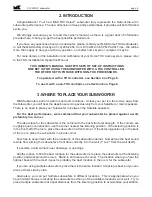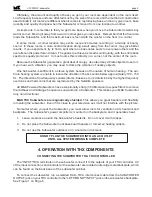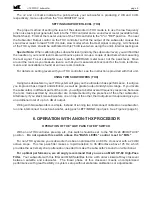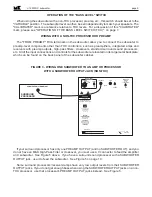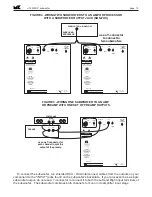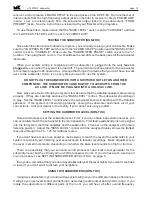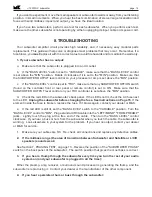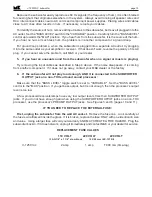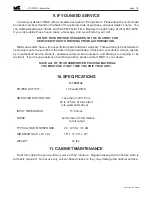
V-1250THX subwoofer
page 13
response, as the room modes excited by one woofer are complemented by the presence of the other.
Alternately, if you stack two subwoofers, one on top of the other, their outputs will couple and give you
an additional total of 6 dB of output.
Wiring with two subwoofers is simple. Instead of running two interconnect cables to one subwoofer,
just run one interconnect to each subwoofer, using the LEFT/MONO input on each subwoofer. You
don't need to use a Y-connector. See Figure 4 (page 10).
7. SATELLITE/SUBWOOFER PHASING TEST
(WITH BOTH THX AND NON-THX COMPONENTS)
Before you can sit down to enjoy your new subwoofer, you need to perform one simple Phasing Test.
This test insures optimum sound in the critical bass frequencies where your subwoofer and Satellite
or L/C/R speakers overlap.
When using the subwoofer with a THX controller and THX L/C/R speakers, the crossover slopes are
linear phase. When the subwoofer is placed along the same axis as the front speakers, the system
will tolerate a plus or minus 28 inch offset before significant losses at the crossover point are seen.
Here are two methods of setting the correct phase with your subwoofer.
PHASING TEST METHOD ONE
Set the switch labelled "SUBWOOFER PHASE" to the "+" position. Then, play a familiar CD, LP,
laserdisc or tape with steady, consistent bass content. Listen carefully to the "mid-bass" region of
70 - 125 Hz. This is the part of the spectrum where electric or string basses and drums predominate.
Then, reverse the position of the "SUBWOOFER PHASE" switch. If it is set to the "+" position, set
it to the "-" position. If it was set to the "-" position, set it to the "+" position. The best way is to have
a partner work the switch while you sit in the main listening position and listen.
Now listen to the same music, concentrating on the mid-bass. If you hear less bass, set the
"SUBWOOFER PHASE" switch to the opposite position. If you hear more bass, leave the switch where
it is; the new position is correct.
PHASING TEST METHOD TWO
First, set the toggle switch labelled "SUBWOOFER PHASE" to the "+" position. Then, feed wideband
pink noise (found on test CDs, the "Wow" disc, or a pink noise generator) through your front channel
speakers and your subwoofer. You can do this test by listening, but it is best to use a spectrum analyzer
and look at its display in the "mid-bass" region of 70 - 125 Hz.
Then, reverse the position of the "SUBWOOFER PHASE" switch. If it is set to the "+" position, set
it to the "-" position. If it was set to the "-" position, set it to the "+" position. The best way is to have
a partner work the switch while you sit in the main listening position and listen.
Now, listen to the same wideband pink noise or look at the spectrum analyzer output in the mid-bass
region. If you hear/measure less bass, set the "SUBWOOFER PHASE" switch to the opposite position.
If you hear/measure more bass, leave the switch alone; the new position is correct.
This test is necessary because the different distances from each speaker to your ears mean that it
is possible that the Subwoofer's output may arrive at your ears out of phase with the Satellites' output.
When this happens, the midbass is cancelled. Re-do this test any time you move any of your speakers
or the listening position.




